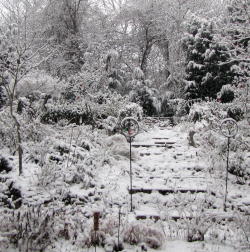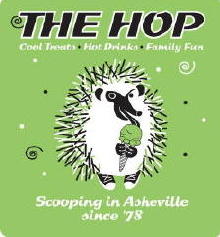
Call it mandala. Mandala is a sanskrit word meaning “circle” or “encircle.” The mandala symbolizes the cycle of life, nature’s design. It is represented in the cone portion of the Echinacea purpurea and enjoyed by the bees.

Call it Spirographic, or webomatic, or spidergraphic.

Call it Fibonacci. Turtle shells have special mystical significance. The top of the turtle shell or carapace consists of 33 plates or scutes. Five spinal scutes called vertebrals, 8 flanking scutes (4 per side) called pleurals and ringed in by 20 edge scutes called marginals. There is an extra pseudo-scute called the cervical making 21 in all. On the bottom or plastron are six pairs of scutes from head to tail called the gular, humeral, pectoral, abdominal, femoral and anal. The intergulars are very tiny and are part of the gulars. The 5 vertebral scutes and the 8 surrounding pleurals make 13, then add in the 21 scutes around the edge for a total of 34 scutes in all and the sequence follows the fifth, sixth, seventh, eighth and ninth terms of the Fibonacci Sequence where each succeeding number in the sequence is obtained by adding the previous two (e.g. 1, 1, 2, 3, 5, 8, 13, 21, 34, 55, 89, 144, etc).

Fibonacci sequences appear in biological settings, in two consecutive Fibonacci numbers, such as branching in trees, arrangement of leaves on a stem, the fruitlets of a pineapple,the flowering of artichoke, an uncurling fern and the arrangement of a pine cone. When one looks very closely into the centers of flowers, especially those daisy types, and with the help of the macro feature of a digital camera, the design is everywhere.

Rudbeckia submentosa ‘Henry Eilers’

Calendula officinalis ‘Pacific Beauty’

Be it mathematics, mystery or magic, call it what you will, I call it perfection.
Frances











Perfection of nature indeed 🙂
You do have a mathematical mind. You lost me at the pseudo scute. 😉 Nothing like giving one a math lesson without them knowing it.
I call it fascinating.
Perfection indeed. I never cease to marvel at the intricacy and symmetry of that found in nature. We just copy don’t we.
Nature is marvelous~it never ceases to amaze and delight me. Lovely images. xoxogail
I think that humans are primordially programmed to respond to patterns and Mother Nature provides us with an abundance of opportunities to notice that she is the ultimate genius in creating them. These pictures are fascinating.
It is our innate sense of mathematics that makes such designs enjoyable to us. We don’t have to know the math to know that they appeal. You’ve done a beautiful job of demonstrating that which most people appreciate without noticing.
Can’t get enough of these! Thanks!
Ahhhh, lovely. Can all this just be by chance? I think not.
Fibonacci sequences in nature fascinate me but if I think too long about it, I get dizzy. Or dtizy. 😉
Beautiful observations! I’ve always loved the details within a daisy-type flower… the Fibonacci? Right?
See, those who say nature cannot be educational certainly never thought about this!
Your post today also reminds me: It’s pinecone season!!! I love collecting pinecones around this time too… seeing the different variations…
I never knew that it could be explained so beautifully that i almost understand! Thanks!
I’ve been enjoying making flower arrangement over 20 years. When I studied Japanese flower arrangement, Ikebana, I had a chance to see the drawing of first formal Ikebana design called “Rikka”. It remined me Mandara.
Wonderful pictures of a wonderful feature of nature! I especially like the Zinnia.
The circle and your pics are perfection squared.
yes natures most efficient plan..form hives ……to whatever…and the rest is fractals………
‘Mathmatics is gods handwriting in the universe’ Gallileo
So fasinating and wonderful, architects have used the ‘Golden Mean’ for thousands of years, borrowed from mother nature. But oh to be good at maths, calculators are my friend, unfortunately. I do love to draw though.
Thank you so much for all of your wonderfully detailed images Frances.
A few years ago my son started wearing his hair pretty short. I noticed he has this pattern in his hair. The center is on the top/back of his head & his hair lays in this pattern if it’s kept short. – Kind of funny – I told him he has Fibonacci hair. :o)
It’s gorgeous to God’s pattern in everything he created.
I’m lost but I have noticed the shell of the turtle is different & interesting. I shall look closer next time I encounter a turtle. Seems all things forming a circle has a connecting factor. Thanks for the info, Ms Frances.
Nature never ceases to amaze me. You don’t either, Frances! What fascinating photos. May I ask what kind of camera and lense you are using? I am looking for a camera to photograph landscapes (and nature in general), images in low light inside, as well as my artwork (oil paintings). We all wish you and your family the Merriest of Christmases!! May the New Year bring you much joy, good health and happiness. love, Katherine & Scott
Awesome macros Frances! The creativeness of Mother Nature never ceases to amaze me.
How funny that you posted this!! I wrote about the Golden Mean on Saturday. Great minds think alike! 😉 I find this math fascinating.
yes interesting!